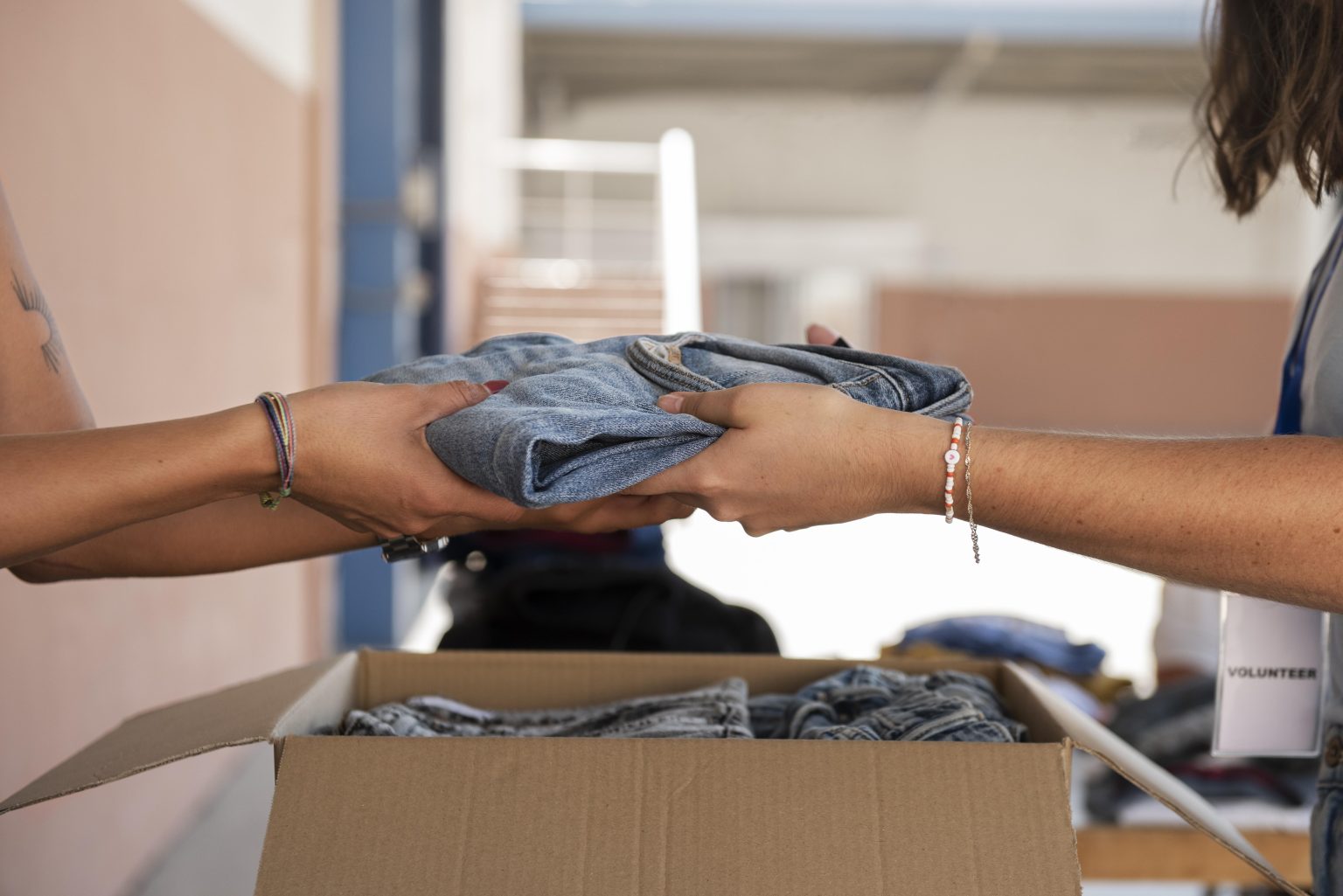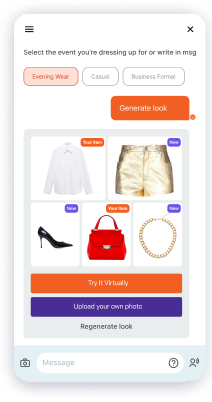
Discover how to reduce your return rate and boost your e-commerce brand’s reputation by following 10 simple steps. Or try our all-in-one SaaS!
As online sales rise, comprising 20.8% of total retail sales, e-commerce confronts a pressing issue: returns. Coresight Research estimates the average return rate for online apparel orders in the US at 24.4%, posing significant business challenges. According to Statista, clothing tops the list of returned items, with 26% of consumers having returned apparel in the past year, primarily due to sizing, fit issues, and matching with wardrobes. This trend underscores the imperative for swift and effective solutions to minimize losses and enhance customer satisfaction.
In this regard, fashion e-commerce should refocus on preventing financial losses as part of its growth strategy. By addressing returns and finding effective solutions, businesses can not only boost sales and revenue but also dilute the ballast caused by high return rates.
LET’S focus on TOP 10
1. Detailed product descriptions and image
22% of people return products because they appear different from their images. In this regard, it’s necessary to provide clear information to help users make informed purchasing decisions and reduce the likelihood of returns.
Here are some specific steps to follow:
- Make the descriptions of your product accurate and comprehensive.
- Include measurements of not only the size but also the shape of the product, materials, and detailed images from multiple angles to show how it fits a pear-type or square-type figure.
- Employ premium-quality pictures and videos to showcase your goods effectively providing a material description, since it's not only color matching but also the issue of matching linen with satin.
- Zoom in on the details (zippers, fabric, buttons, joints).
- Highlight unique points of the item.
2. Size guides and fit recommendations
75% of returns in fashion e-commerce occur because the item doesn't fit properly.
Help customers choose the right size by offering size guides and fit recommendations. When describing clothing, provide chest, waist, and length measurements. For shoes, include measurements for the insole length and width. Implementing a user-friendly tool to convert centimeters into inches is also important.
Provide detailed measurements for each size option and advise how items typically fit. Implementing virtual fitting rooms can further assist customers in finding the perfect fit, reducing returns due to sizing issues.
3. Customer reviews and ratings
Integrate customer reviews and ratings into your product pages.
Authentic feedback from previous buyers can instill confidence in potential customers and reduce uncertainty about product quality and suitability. Encourage satisfied customers to leave reviews and address any negative feedback promptly to show your commitment to customer satisfaction.
Some brands refer to Instagram bloggers showing how the look fits the current influencer.
But imagine you can provide the ability to check how the look fits your user with the help of a virtual try-on and matching current wardrobe.

4. Enhanced customer support
Offer exceptional customer support throughout the purchasing process. Provide multiple channels for customers to reach out for assistance, such as live chat but that is alive 24/7, email, and instant message. What about integration with their messenger WhatsApp? Well-trained support staff can address customer concerns promptly, potentially resolving issues before they lead to returns.
Consider implementing AI-powered chatbots (like the one offered by Qlode) to provide instant assistance and streamline customer interactions no matter where you are operating and in which time zone or language.
5. Optimized shipping and delivery
It's crucial to establish realistic delivery timelines. According to WeSupply, more than 85% of customers anticipate seeing estimated delivery dates during checkout.
Provide accurate delivery estimates and tracking information to keep customers informed about the status of their orders.
Offer expedited shipping options for customers who require faster delivery, reducing the likelihood of last-minute cancellations or returns due to shipping delays.
But also think about your costs for delivery. Many customers know they can get a free shipping option while ordering for EUR 100 plus, but can you be sure that the clothes will NOT be returned?
Just as an example, Zalando guarantees free shipping with the £35.00 minimum order value. In this case, the company meets the delivery costs. If a customer wants to return goods, the company bears double losses.
What if you can simplify fitting and matching before any order anything for delivery???
6. Flexible return policies
Implement flexible return policies that are fair and transparent. Communicate your return policy on your website, including return eligibility criteria, timeframes, and procedures. Consider offering extended return windows or hassle-free return options, such as free return shipping or in-store returns, to make the return process more convenient for customers.
Here’s an example:
- A 10-day return window.
- Items must be unused and in original packaging.
- A customer must complete the online form, and print a prepaid label.
- Offer varied options like in-store, mail, or drop-off.
- It takes 5 days to process a refund.
7. Personalized recommendations
Utilize data analytics and customer insights to offer personalized product recommendations. Recommend complementary items based on previous purchase history or browsing behavior, increasing the likelihood of successful upsells and reducing the need for returns by ensuring that customers receive items that meet their preferences and needs.
But make sure it’s not a random integration in your emailing scenario with CRM. It would look strange to recommend trendy Adidas sneakers for a formal outfit or to someone who has never worn casual or business casual attire and feels uncomfortable in such a look, no matter how trendy the sneakers are. It would also be irrelevant to recommend a little black dress to the ladies with an apple body shape.
Take a look at Qlode's occasion-based outfit recommendations. Customers can upload items they already own and complement them with pieces from your store, tailored to their size, your inventory, and capsule wardrobe guidelines.
8. Post-purchase engagement
Stay engaged with customers after they make a purchase. Send personalized follow-up emails to thank customers for their purchase and provide useful information or tips related to their bought products.
Suggest items that complement their previous purchases and offer discounts.
Check the items one bought and provide capsule wardrobe ideas based on stylist advise empowered by AI from Qlode. Make it truly personalized saving customer budget and contributing to sustainability invite to add one particular item for a perfect outfit instead of providing random recommendations that have any link to his previous customer behavior.
9. Implement virtual try-on technology
Embrace virtual try-on technology, especially for fashion and accessories. Allow customers to virtually try on clothing, eyewear, or jewelry using augmented reality (AR) or virtual reality (VR) technology.
Virtual try-on experiences can enhance the online shopping experience, reducing returns by helping customers visualize how products will look and fit before making a purchase.
The Qlode SaaS offers a top-notch try-on feature with a focus on personalization.

10. Continuous improvement through feedback analysis
Regularly analyze return data and customer feedback to identify trends and areas for improvement. Use this information to refine your product offerings, website usability, and customer service processes continually. By listening to customer feedback and adapting accordingly, you can minimize returns and enhance the overall shopping experience.
Implementing these strategies can effectively lower return rates, enhance customer satisfaction, and ultimately increase your online store's profitability.
Moreover, our solution streamlines the implementation of these 13 strategies by integrating a blend of customer satisfaction tools and advanced analytics, making the process more efficient and manageable.
Ready to take action?
Schedule a product demonstration to see how our solutions can help you optimize your e-commerce business. Need personalized guidance? Contact us at [email protected] for a consultation today.
Our product not only decreases return rates but also offers a multitude of additional benefits for online clothing sales. During the trial period at one of our partners, returns decreased from 25% per month to 13.6%, showcasing its effectiveness in mitigating return issues. Furthermore, our solution provides:
- Streamlined purchasing process
- Improved product visibility
- Enhanced customer engagement
- Increased sales and revenue
- Improved brand reputation
- Higher customer loyalty
With our product, retailers can expect greater overall profitability and a competitive edge in the online marketplace. For further guidance and insights, don't hesitate to consult with our experienced consultants.
FAQ
What is the average return rate for different types of products? As of December 2023, the most returned online purchases by category in the US were clothing and accessories - 24% and 17% respectively, followed by electronics and household items. Luggage, DIY, and hobby supplies are at the end of the list.
How much do companies lose on returned items? In 2023, return fraud resulted in a staggering $101 billion in total losses for retailers. Additionally, for every $100 worth of returned merchandise, retailers face a loss of $13.70 due to return fraud. Thus, companies can incur significant financial losses due to returned items, including costs associated with restocking, processing, and potential damage to merchandise. The exact amount varies depending on factors such as the product's condition and the company's return policy.
What do companies do with returned items?
Companies have various options for handling returned items:
- Restock and resell: Companies may opt to restock and resell returned items that are in good condition.
- Refurbish or repair: Some companies choose to refurbish or repair returned items before reintroducing them to the market.
- Discounted sales: Returned items may be sold at discounted prices to recoup some losses or attract customers.
- Liquidation: Companies may liquidate returned merchandise through clearance sales or auctions to quickly recover capital.
- Recycling: Another option involves recycling returned clothing, although this process often requires a substantial investment.
What are the most common reasons for returns in an online store?
The most common reasons for returns in online stores include:
- Items not fitting properly
- Receiving the wrong item
- Dissatisfaction with product quality or appearance
- Issues with delivery or shipping
Understanding these reasons can aid companies in devising strategies to reduce returns and enhance customer satisfaction.


